
1673 (MDCLXXIII) was a common year starting on Sunday of the Gregorian calendar and a common year starting on Wednesday of the Julian calendar, the 1673rd year of the Common Era (CE) and Anno Domini (AD) designations, the 673rd year of the 2nd millennium, the 73rd year of the 17th century, and the 4th year of the 1670s decade. As of the start of 1673, the Gregorian calendar was 10 days ahead of the Julian calendar, which remained in localized use until 1923.
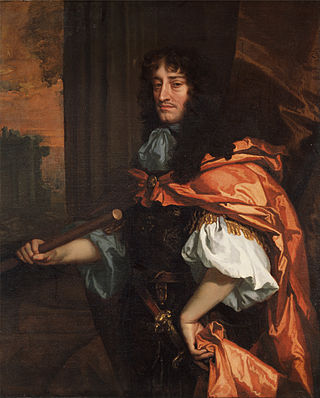
Prince Rupert of the Rhine, Duke of Cumberland, was an English-German army officer, admiral, scientist, and colonial governor. He first rose to prominence as a Royalist cavalry commander during the English Civil War. Rupert was the third son of the German Prince Frederick V of the Palatinate and Elizabeth, eldest daughter of King James VI and I of England and Scotland.

James Scott, 1st Duke of Monmouth, 1st Duke of Buccleuch, was an English nobleman and military officer. Originally called James Crofts or James Fitzroy, he was born in Rotterdam in the Netherlands, the eldest illegitimate son of Charles II of England with his mistress Lucy Walter.
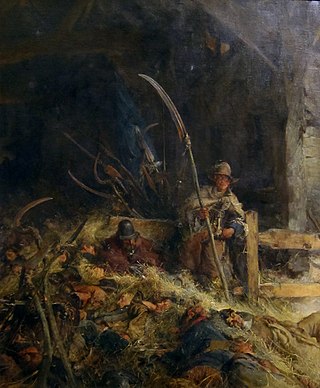
The Monmouth Rebellion, also known as the Pitchfork Rebellion, the Revolt of the West or the West Country rebellion, was an attempt to depose James II, who in February 1685 succeeded his brother Charles II as king of England, Scotland and Ireland. A group of dissident Protestants led by James Scott, 1st Duke of Monmouth, eldest illegitimate son of Charles II, opposed James largely due to his Catholicism.

Frederick Herman de Schomberg, 1st Duke of Schomberg KG PC was a German-born army officer who served as the English Master-General of the Ordnance from 1689 to 1690. Having fought in the French, Portuguese and English armies, he was killed in action fighting on the Williamite side at the Battle of the Boyne in 1690.
The 63rd Regiment of Foot was a British Army regiment raised in 1756. Under the Childers Reforms, it amalgamated with the 96th Regiment of Foot to form the Manchester Regiment in 1881.
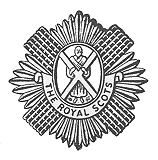
The Royal Scots, once known as the Royal Regiment of Foot, was the oldest and most senior infantry regiment of the line of the British Army, having been raised in 1633 during the reign of Charles I. The regiment existed continuously until 2006, when it amalgamated with the King's Own Scottish Borderers to become the Royal Scots Borderers, which merged with the Royal Highland Fusiliers, the Black Watch, the Highlanders and the Argyll and Sutherland Highlanders to form the Royal Regiment of Scotland.
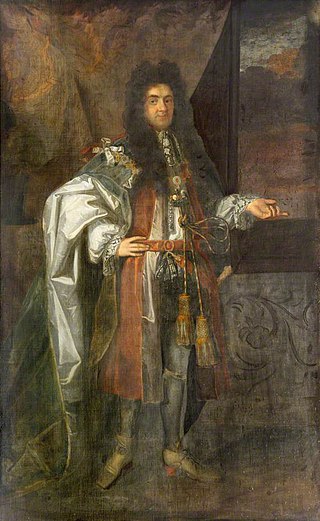
Christopher Monck, 2nd Duke of Albemarle was an English Army officer, peer, politician and colonial administrator who sat in the House of Commons from 1667 to 1670 when he inherited his father's dukedom and sat in the House of Lords.

The Battles of Schooneveld were two naval battles of the Franco-Dutch War, fought off the coast of the Netherlands on 7 June and 14 June 1673 between an allied Anglo-French fleet commanded by Prince Rupert of the Rhine on his flagship the Royal Charles, and the fleet of the United Provinces, commanded by Michiel de Ruyter.
Events from the year 1673 in England.

The English Army existed while England was an independent state and was at war with other states, but it was not until the Interregnum and the New Model Army that England acquired a peacetime professional standing army. At the Restoration of the monarchy, Charles II kept a small standing army, formed from elements of the Royalist army in exile and elements of the New Model Army, from which the most senior regular regiments of today's British Army can trace their antecedence. Likewise, Royal Marines can trace their origins back to the formation of the English Army's "Duke of York and Albany's maritime regiment of Foot" at the grounds of the Honourable Artillery Company on 28 October 1664.

The frigate Gloucester was a Speaker-class third rate, commissioned into the Royal Navy as HMS Gloucester after the restoration of the English monarchy in 1660. The ship was ordered in December 1652, built at Limehouse in East London, and launched in 1654. The warship was conveying James Stuart, Duke of York to Scotland, when on 6 May 1682 she struck a sandbank off the Norfolk coast, and quickly sank. The Duke was among those saved, but as many as 250 people drowned, including members of the royal party; it is thought that James's intransigence delayed the evacuation of the passengers and crew.
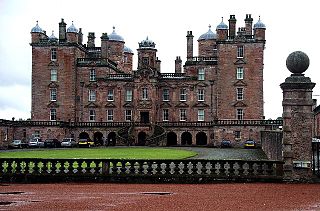
Lieutenant-General James Douglas (1645–1691), younger brother of the Duke of Queensberry, was a Scottish military officer, who served as Shire Commissioner for Peeblesshire in the 1685 to 1686 Parliament of Scotland.

The Irish Army or Irish establishment, in practice called the monarch's "army in Ireland" or "army of Ireland", was the standing army of the Kingdom of Ireland, a client state of England and subsequently of Great Britain. It existed from the early 1660s until merged into the British Army in 1801, and for much of the period was the largest force available to the British Crown, being substantially larger than the English and Scottish establishments. Initially solely under the monarch's control, from 1699 the army was jointly controlled by the monarch and by the Parliament of England. The Parliament of Ireland took over some responsibilities in 1769, extended after 1782 when it began passing its own Mutiny Acts. The army, funded by Irish crown revenues, had its own Commander-in-Chief.

The siege of Carrickfergus took place in August 1689 when a force of Williamite troops under Marshal Schomberg landed and laid siege to the Jacobite garrison of Carrickfergus in Ireland. After a week the Jacobites surrendered, and were allowed to march out with the honours of war.
Events from the year 1673 in France
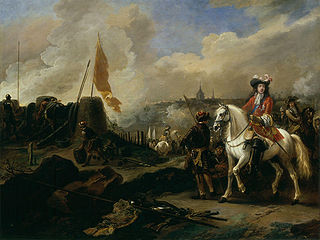
The Flanders Expedition of 1678 saw an English expeditionary army sent to Flanders to support the Dutch and Spanish armies against the French at the tail end of the Franco-Dutch War.

The English expedition to Portugal was a military expedition dispatched by England to Portugal in August 1662 to participate in the Portuguese Restoration War against Spain. It consisted of an English brigade largely drawn from veterans of the Eighty Years' War and the Wars of the Three Kingdoms, which fought in several major battles and skirmishes of the conflict under the command of Frederick Schomberg. The brigade remained in Portugal until the conflict's end in 1668, when it was disbanded. Under Schomberg's leadership, the brigade proved to be a decisive factor in the eventual Portuguese victory in the conflict.

Admiral Sir John Harman was an English officer of the Royal Navy, who served first under the Commonwealth, then Charles II following the 1660 Stuart Restoration.

The Royalist Army in Exile was the army formed by those loyal to Charles II from 1656 to 1660 during his exile from the throne. They were a mixture of Royalist troops from his three Kingdoms. It included men from England and Scotland, but the bulk were Catholics from Ireland, many of whom had previously served in the Irish Confederate armies.
















